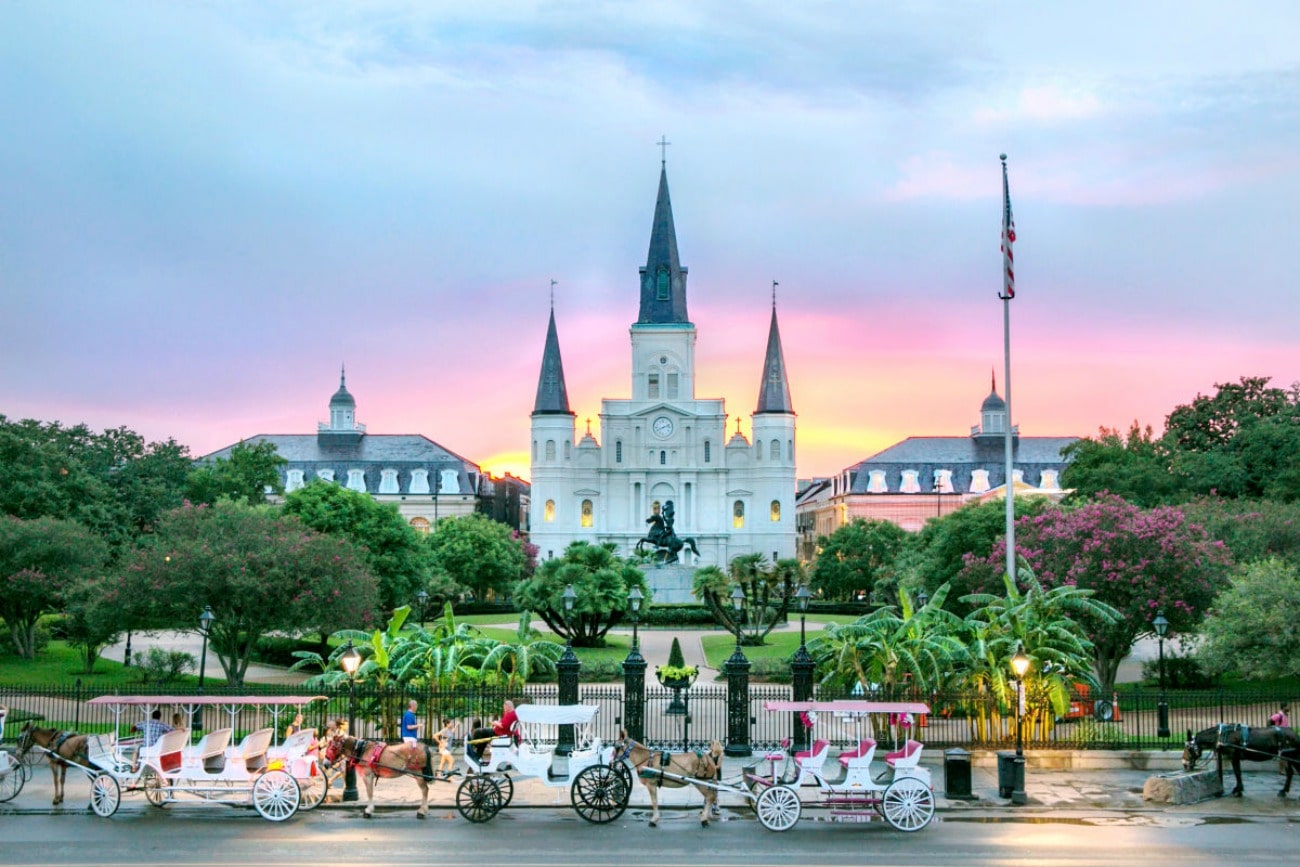Ambling around New Orleans’ French Quarter is an immersive experience replete with live music on every block, historic architecture from the mid 18th century, tap dancers, fantastically costumed revelers no matter the month, amazing food and Mardi Gras parades every Sunday all year long. Let’s not forget the voodoo culture, ghosts in every nook and cranny and cemeteries where the deceased are interred in crypts above ground due to the low water table. From the moment you enter the Quarter, you’re transported to another world— one of endless fun and bottomless drinks. It’s perfectly legal to carry a drink around here if it’s not in a glass container. As you stroll sleazy Bourbon street, party central for thousands depending on the time of year, that fact will be painfully clear. This is a drinking town, but the French Quarter is not just for revelers. It’s a quite unique neighborhood that’s steeped in history with charming streets lined with elegant houses which, behind the facades, shelter palm-shaded courtyards and gurgling fountains.
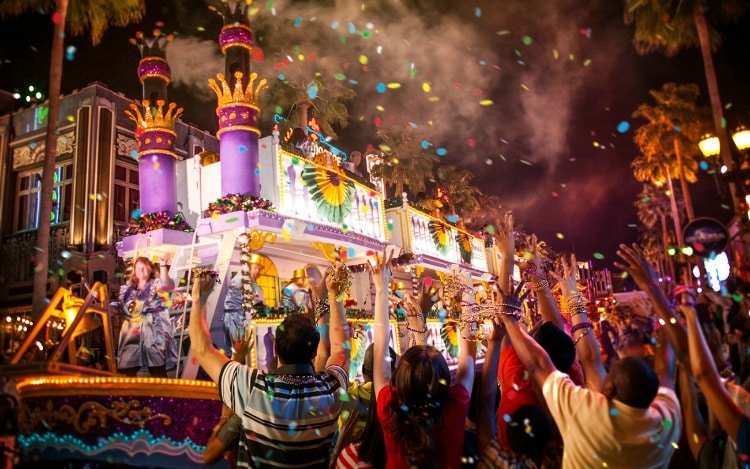
Mardi Gras
Every year, 47 days before Easter, New Orleans goes crazy with its traditional observance of Mardi Gras. Mardi Gras – “Fat Tuesday” in French – takes place on the day before Ash Wednesday, and the moniker refers to the last night of eating rich or “fattening” foods before the sober fasting of the Lent. It falls on Tuesday, February 25th, 2020, and on February 16th in 2021. While Mardi Gras celebrations occurred in Louisiana as far back as 1699, it wasn’t until 1856 that a group of businessmen formed a secret society to organize a formal parade and established the first of the “krewes”, social clubs that host the various parades. The two oldest and most famous krewes are the Mistick Krewe of Comus and Rex.
Meeting of the Courts
In New Orleans, there is more to the tradition than raucous parades and bead-strewn crowds. The krewes are real social clubs that even today hold invitation-only masked balls all during the season. Women start dress fittings as early as the prior spring, and Mardi Gras formally concludes just before midnight with a ceremony known as the “Meeting of the Courts” in which Rex’s King and Queen of Carnival leave their ball to meet with Comus and his Queen at the Mistick Krewe’s ball. The scene there is one of parallel worlds, where the high society of New Orleans present their daughters at a traditional debutante ball while the wildly dressed parade-goers swirl around. I remember being an escort at Comus, the chicest of the two balls, back in the day when Caroline Kennedy also attended.
Celebrities as Grand Marshals
Over the years, celebrities who have attended Mardi Gras parades or served as grand marshals include Bob Hope, Billy Crystal, Joan Rivers, Kevin Costner, Nicolas Cage, James Gandolfini, Will Ferrell and Hugh Laurie as well as singers Kelly Clarkson, Cyndi Lauper, LeeAnn Rimes, Britney Spears, and native New Orleanians Patricia Clarkson and Harry Connick Jr.
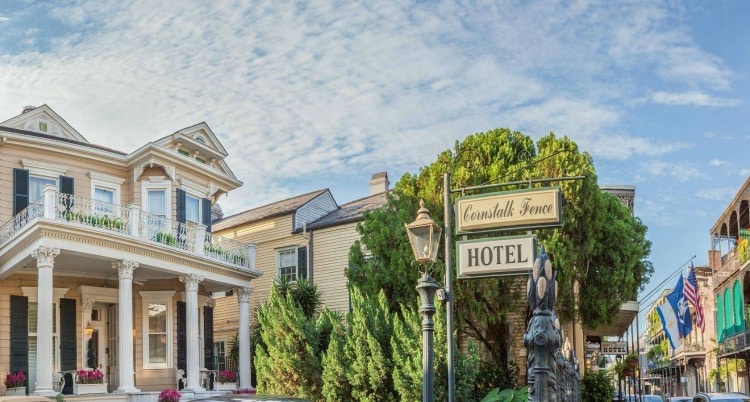
Lodging in the French Quarter
If you’re headed to New Orleans for Mardi Gras, I recommend staying in the French Quarter where there are good choices including the historic Cornstalk Hotel with just 14 rooms. Originally a private home dating to 1816, the hotel’s name comes from its iron fence depicting cornstalks, erected in the 1850s by the owner as a remedy for his Iowa-born wife’s homesickness. The building is reputed to be one of the most photographed in the French Quarter with elegant accommodations.
The Royal Sonesta Hotel
My favorite hotel, however, is The Royal Sonesta, a luxury property in the heart of the Quarter, that’s celebrating its 50th anniversary this year. It’s within easy walking distance of top restaurants, shops, museums and Jackson Square, the beating heart of old New Orleans. The building dates from 1890 and was once a brewery. The site of the hotel was originally residential in 1721 when the city was first laid out, then it became a winery in the 19thCentury. In 1890 the American Brewing Company purchased and expanded it to encompass an entire city block, and in 1969 the landmark was transformed to present-day status.
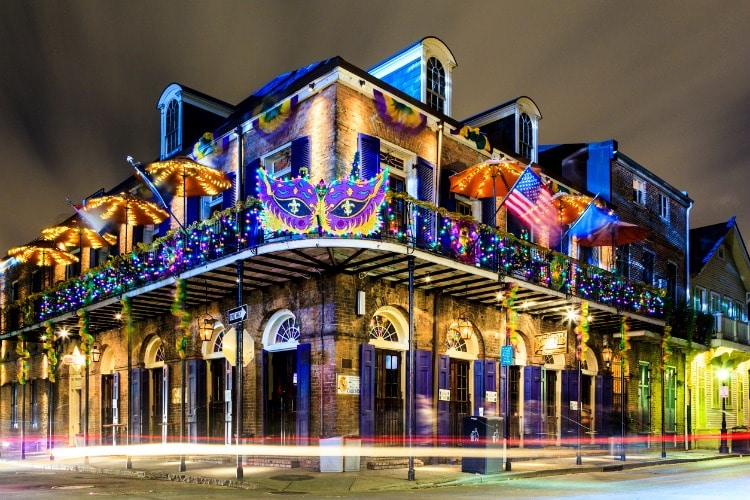
Room with a View
While many visitors to the Big Easy might prefer a balcony suite facing Bourbon street which is party-central every night, I chose one on the concierge floor in the rear of the hotel. It’s very quiet and private and believe me that’s a good thing in NOLA. Your own concierge will help you with restaurant and club reservations and will be happy to make suggestions of things to do, from museums to ghost tours. The hotel also boasts a rooftop pool, 24-hour fitness center, a chic jazz club with live performances and Le Booze, a whiskey bar.
Restaurant R’evolution
One of the top dining spots in the Quarter is Restaurant R’evolution, located off an outdoor garden in the Royal Sonesta. Created by world-famous chefs John Folse and Rick Tramonto, menu highlights include fire-roasted oysters, a double-thick veal chop, grilled swordfish with oysters, beer-battered crab beignets, and “Death by Gumbo” with roasted quail in it. For dessert, I recommend splitting two different dishes like their famous Coconut Bread Pudding Crème Brulee and the Chef’s Inspiration.
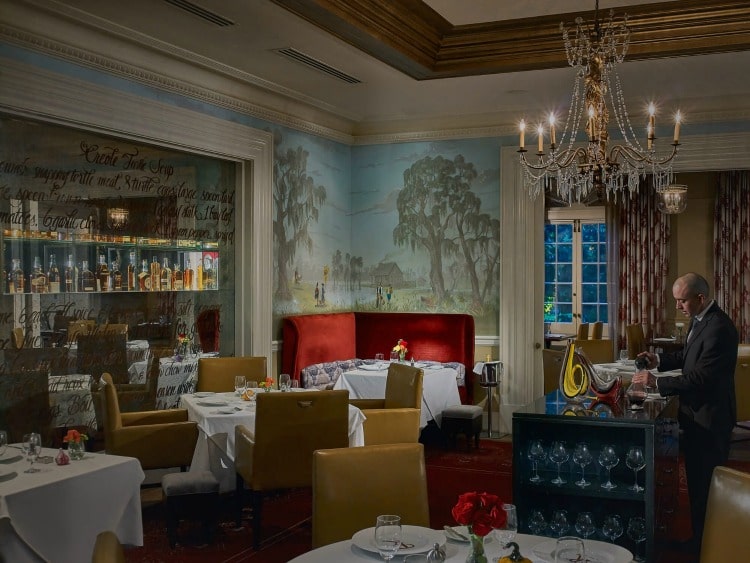
What to See & Do:
Bourbon & Royal streets – The number one thing to do in New Orleans is to leisurely stroll the Quarter, soaking up the live music everywhere and the atmosphere. It’s unlike anyplace else in the world and it seems as if every street holds a special magic. Bourbon St. is a brash and boozy scene, but one street over on Royal St. and you’ll find a more refined vibe. Check out the antique shops and don’t miss M.S. Rau, arguably the finest antique store in America which has doubled its exhibition space to almost 50,000 square feet. At this 112-year-old family-run emporium you’ll find a treasure trove of rare antiques, art and jewelry. Some of the highlights currently include the King of England Edward VII’s “seat of love” – a sex chair – custom designed for his youthful escapades in Paris ($68,500), a rare 17th century Italian Baroque wrought-iron safe ($98,500), a 15-carat sapphire ring by Fred ($698,500), plus a scandalous Rene Magritte nude of a masked woman titled “Le Carnaval du Sage”. Price upon request. Think in the millions. 622 Royal St; (888) 711-8084; www.rauantiques.com

Jackson Square & the Basilica – Jackson Square is the center of the French Quarter since the city was formed in 1718 when it was built by the French as a military parade ground called Place d’Armes, later renamed Plaza de Armas by the Spanish. The layout was inspired by a 17th century square in Paris, the elegant Place des Vosges. Surrounding the square are some of New Orleans’s top destinations like the St. Louis Cathedral, one of the country’s oldest. Next door is the Cabildo, formerly the seat of the Spanish colony, and the Presbytère, originally built to house clergy. Both properties are now part of the Louisiana State Museum. Today, Jackson Square is still vibrant, and popular with both locals and visitors. In the surrounding area are open-air markets with artists showing their wares, the French Market, the oldest of its kind in the U.S., the famous Café du Monde and the Mississippi River. 701 Decatur St; www.experienceneworleans.com/jacksonsquare
Historic Houses – The French Quarter is steeped in history with several historic homes open to the public, two of which are the Hermann-Grima House and the Gallier House.
Hermann-Grima House – This 1831 Federal-style house is a complex, with a large courtyard and outbuildings like stables and slave quarters, showing how prosperous Creole families lived in that age. Quite a bit of the furnishings in the home belonged to the Hermann or Grima families. The original owner Samuel Hermann, a trader, went broke when the cotton market collapsed in 1837, and sold the property to Felix Grima, an attorney. In 1975 it was converted to a museum. 820 St Louis St; (504) 274-0750; www.hgghh.org
Gallier House – The 1860 Gallier House was the home of James Gallier Jr., one of New Orleans’s most prominent architects. It was highly innovative for its time as it was one of the first houses in the region to have both hot and cold running water. It offers an elegant glimpse of the design of that era as well as the lifestyle. 1126 Royal St; (504) 274-0748; www.hgghh.org
The Mardi Gras Museum of Costumes & Culture – Even if your visit is not during the Carnival season, you can experience some of the magic with a visit to The Mardi Gras Museum of Costumes & Culture, with rotating exhibitions about the tradition, its movers and shakers and costumes, all part of the personal collection of founder Carl Mack. Don’t miss the Costume Closet, where you can try on the glittering bejeweled creations and be a king or queen for the day. Take as many selfies as you want – this is a fun stop. 1010 Conti St; (504) 218-4872; www.themardigrasmuseum.com
The Cemeteries – New Orleans cemeteries are notable for their ornate mausoleums – as the city is below sea level, bodies cannot be buried, or they’d float to the surface. Many are open for tours.
St. Louis Cemetery No. 1 – New Orleans’s oldest cemetery c. 1789, houses the tomb of voodoo queen Marie Laveau. Another tomb here that has yet to be filled, a white pyramid, is where actor Nicolas Cage plans to be buried when he passes. 425 Basin St, (504) 596-3050; nolacatholiccemeteries.org
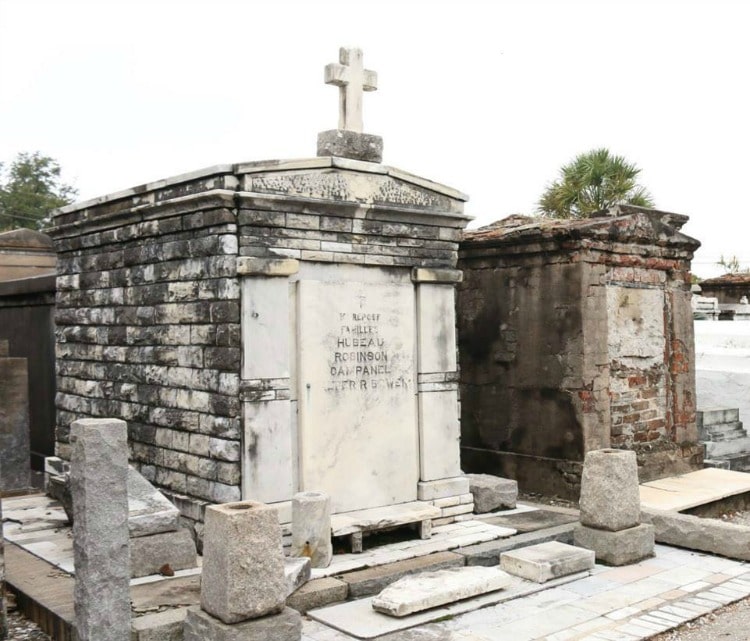
Lafayette Cemetery No. 1 – The 19th century Lafayette Cemetery No. 1, located in the city’s Garden District, may look familiar, as it has appeared in music videos by LeAnn Rimes and New Kids on the Block, and in the films Double Jeopardy (1999) and Dracula 2000 (2000). Lafayette No. 1 also serves as the fictional resting place for the characters in Anne Rice’s novels “Interview with a Vampire” and “The Witching Hour.” 1427 Washington Ave; (504) 658-3781; www.nola.gov
Where to Eat:
Antoine’s – The Quarter is not all honky-tonk and jazz bars, there are top tier restaurants here, some with over a hundred years of history. Chief among them is Antoine’s where in 1889 Jules Alciatore, son of the founder Antoine, invented Oysters Rockefeller, named for John D. Rockefeller, America’s wealthiest man. Today, the restaurant is still run by descendants of the founder. They have served over 4 million oysters since 1840 to the likes of Brad Pitt, the Duke and Duchess of Windsor, Sydney Poitier, Whoopi Goldberg and almost every U.S. president since Herbert Hoover. 713 St Louis St; (504) 581-4422; www.antoines.com
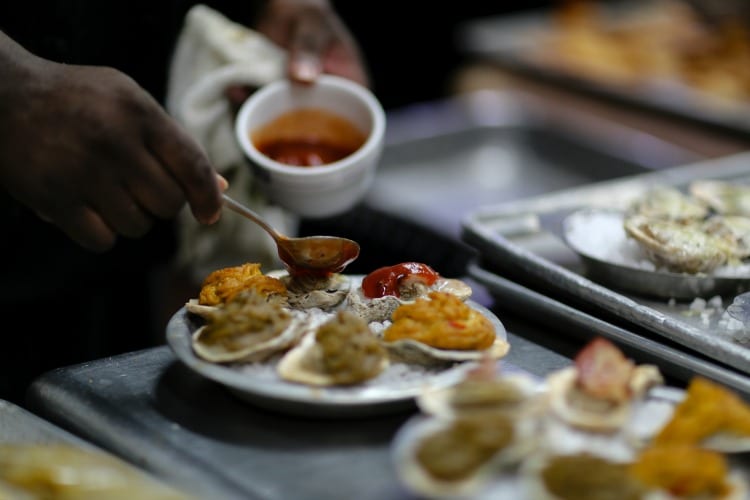
Galatoire’s – For generations of New Orleans residents, Galatoire’s, founded in 1905, is the place to go for lunch where families have their regular tables and servers. Founded by Frenchman Jean Galatoire and still run by his descendants, signature dishes include Trout Marguery, Turtle Soup, Crabmeat Ravigote and Oysters en Brochette. I savored a trout sautéed with crab meat but the more traditional way it’s served here is deep-fried. Mick Jagger, Harpo Marx, and several U.S. presidents have dined here. Tennessee Williams, a regular, liked to sit at the front window, and Mark Twain described Galatoire’s Pompano dish as “delicious as the less criminal forms of sin.” 209 Bourbon St; (504) 525-2021; www.galatoires.com
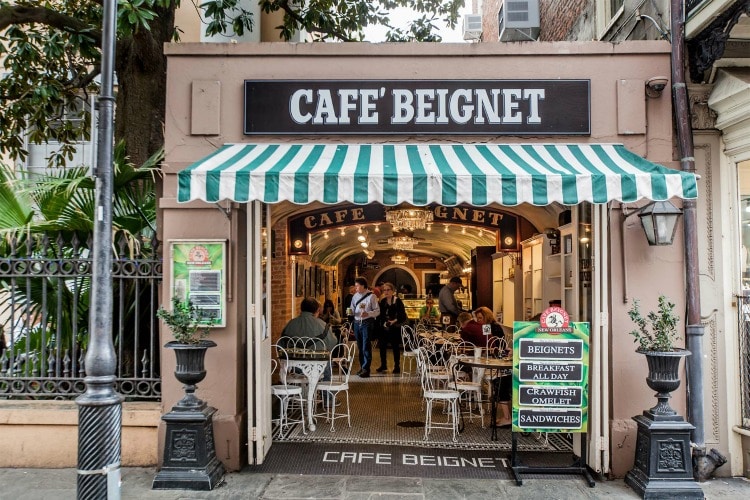
Café Du Monde & Café Beignet – You can’t come to New Orleans and not have beignets, a fancy word for small doughnuts covered in powdered sugar and served hot. If you don’t mind waiting in line for an hour get them at the famous Café Du Monde in Jackson Square; otherwise, time crunchers can order them at the charming Café Beignet across from the Royal Sonesta. Relax! They’ll give you a number and deliver them right to the table. Take in the live jazz while enjoying the supreme decadence of this legendary New Orleans confection.
Café Du Monde – 800 Decatur St; (504) 525-4544; www.cafedumonde.com
Café Beignet – 334 Royal St; (504) 500-4370; www.cafebeignet.com

